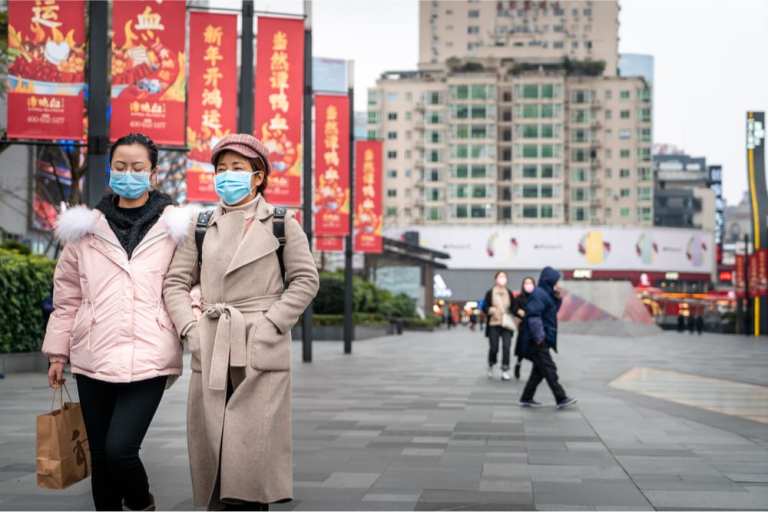
Factories reopen. Supply chains re-linked. Businesses operating — on site.
And yet: Reopening doesn’t mean rejuvenated. Or revival.
To see an economic recovery emerge from the devastation of the coronavirus — no matter where you look — the demand shock must abate.
The New York Times reported this week that China may face a daunting task in getting its consumers to spend even as the supply part of the equation has started to come back.
Amid lockdowns and job cuts, as various sectors of making money (and avenues through which to spend) were darkened, consumer behavior has shifted.
“For a generation of young Chinese people known for their American-style shopping sprees,” noted the Times, “saving and thrift hold a sudden new appeal.” Against that backdrop, overall retail sales were down by about a 19 percent in China in the latest quarter, and in March verticals such as furniture and clothing were down by more than that as measured year over year.
Reuters reported that China’s factory activity is likely to have risen for a second straight month when data are released for April, as more firms opened for business. As will be measured by that nation’s Purchasing Manager’s Index (or PMI) this week, the reading is estimated by consensus to be 51, down from 52 in March (readings above 50 indicate growth).
The stark contrast between retail sales and a country that would, ostensibly, be open for business highlights a gap in consumer confidence that may be tough to bridge.
To help spur at least some spending, some local governments and retailers are offering billons of yuan worth of vouchers to get people to spend. And as noted in the Guardian, Tencent has debuted “buy now, pay later” options through WeChat.
Start Small — With a Cup o’ Joe?
Might the consumer recovery start small — as in, very small? Starbucks said earlier in the week that it is eyeing a recovery in China by the end of September. Now, buying the daily cup of java may translate, eventually, into spending on big ticket items, which would be critical to luxury retailers, where estimates from firms like Bain peg the Chinese consumer’s share of global luxury goods market spending at more than 30 percent.
And yet. Just as a V-shaped snapback may not yet be in the cards in China, it would be premature to assume there will be one here in the U.S. Even despite trillions of dollars in economic stimulus translating into direct payments to individuals and families, nobody’s all that sanguine.
The Conference Board said Tuesday that its latest reading of its confidence index slid to 86.9 in April, down from 118.8 in March. The index represents a composite of consumers’ assessment of the present situation and their expectations for the future.
On Wednesday (April 29), Federal Reserve Chairman Jerome Powell weighed in on what should come next. He said at a news conference that there should be additional spending from the government to promote an economic recovery.
“The ongoing public health crisis will weigh heavily on economic activity, employment, and inflation in the near term, and poses considerable risks to the economic outlook over the medium term,” the Fed said in a statement. The current policy — of keeping rates at zero, which in turn is an attempt to stimulate spending and investment — will remain.
Debt lurks as a headwind to a rejuvenated consumer, as it so often does. As relayed by CNBC, in China, many households took on debt to help offset the impact of the coronavirus pandemic.
Individual consumer loans were up by 609.4 billion yuan ($87 billion) in March, per data from the People’s Bank of China. Roughly half of the March increase went to home mortgages. Consumption loans accounted for 262.2 billion yuan, up about 9.6 percent from a year ago.
The read across may be a bit ominous for hopes of a swift and sharp U.S. recovery. Experian has estimated that U.S. consumer debt grew by 19 percent in the decade since 2009, and stands at a record high of more than $14.1 trillion. The latest spate of bank earnings has shown credit card and other debt souring, and quickly.
Open for business? Maybe. But who’s buying?